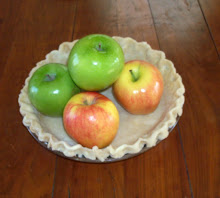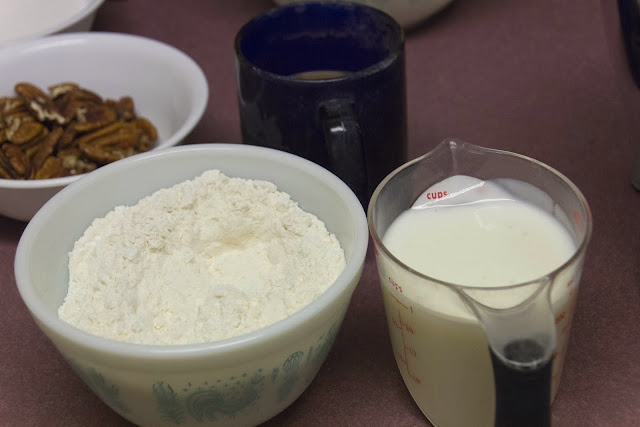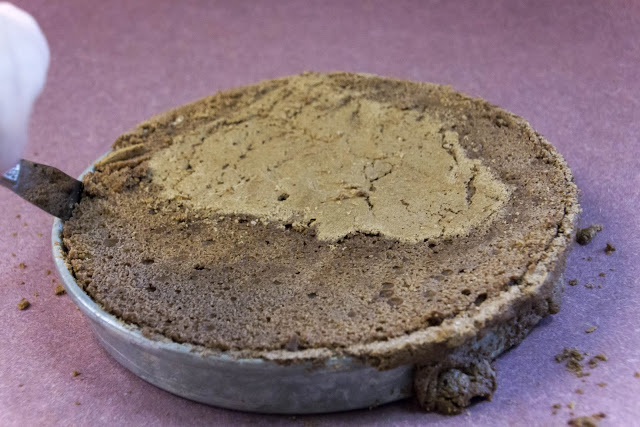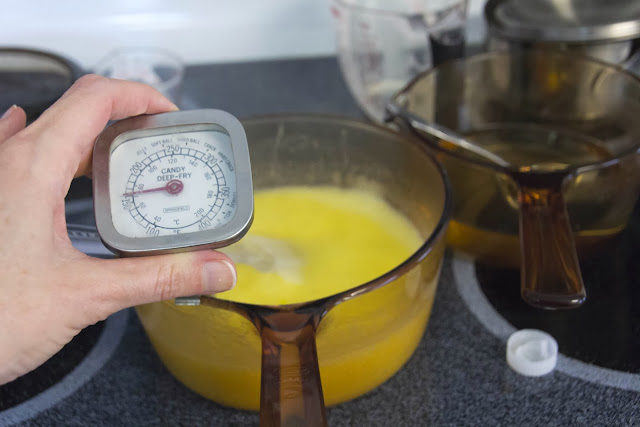This post isn’t about food.
It’s about how I spent my summer taking the CPA exam. Everything that I wished I would have known
going in.
The short version
It sucked, but it was worth it.
The really long version
I’m an accountant by trade. Much like my adventures in cooking and food
blogging, I never had any formal training.
Two years ago, I headed back to school to
get a Master’s Degree. My school offered something called the Becker Fast Pass program, an intensive course designed to get students through all
four sections of the CPA exam the summer after graduation. I don't work in public accounting, don't "need" to be a CPA, but it seemed like a worthy achievement. The cost was $3,000, not cheap, but surely
something I could recoup over the remaining course of my career.
For those of you considering Becker, there are less drastic
options than the Fast Pass Program.
Whatever you order, you will get a textbook and full access to the
online lectures and homework. You can
attend live classes (either a Fast Pass or a slower schedule) or work through
it at your own pace. Becker will work
with you if you make the wrong choice (i.e. they will let you switch from Fast
Pass to the slower class, from online only to live classes, etc).
I had two hesitations. First was the curious recommendation that
students in the Fast Pass program work no more than 20 hours a week, a concept
that is completely foreign to me. Everyone
I talked to said that they didn’t work at all.
Eventually I decided that I was done with being in school and wanted to
get it over with as soon as possible.
Hesitation #2 was the little detail of the passing rate. The average pass rate for the CPA exam is
around 50%. It’s not clear how many
people pass all four parts on the first attempt, but the numbers I saw were around 10-20%. People spend
years taking and retaking the sections until they pass. Becker widely advertises that their students
pass “at double the rate of non-Becker candidates.” Vague wasn’t comforting. I wanted something more solid before I gave
up my life for three months. I turned to
the internet and saw “Becker is gold” and
“Becker is a complete waste of time and money.
You will fail, fail, fail”.
When the time came, I took the leap and forked over $3,000. A
few days later I was pleasantly surprised to win a 50% scholarship. Now that I had less skin in the game, it was
time to figure out a schedule. I was
trending toward ignoring the 20 hour work limitation until I looked at the text
book and logged into the online software for the first time. There is no way to convey the sense of
hopelessness that settled in within 10 minutes.
I took a look at my finances and told my boss that I wouldn’t
be able to work full time for the summer (a flexible employer is a beautiful
thing). My schedule was based around my
attention span: 2 hour study sessions. I
got up each morning at 6, worked out, and then hit the books. I worked each day from 10-3 (yeah that’s
right, 25 hours a week. What a rebel).
Then I went home and got in another 2 hours. On nights that I had class, I headed up to
school for the four hour sessions. On
nights when I didn’t have class, it was all study all the time. On weekends, I studied anywhere between 4-10
hours a day, and rarely left the house or even got dressed. There was very little TV, except as a study
break on weekends. I saw a few friends
here and there, and spent time with a special someone, but had to pass on
most everything else.
There was another problem.
You can’t just show up and take the CPA exam because you want to. You have to be approved by your state
accountancy board and be given the notorious NTS (notice to schedule) to sign
up. The test is the same in all 50
states, and can be taken in any state, but each state has different
requirements for registration. In order
to meet Becker’s test windows, we had to get the NTS a few weeks before
graduation. It used to be that you could
send in a transcript showing the final semester’s courses in progress. Well, in January, our state eliminated early registration. Becker suggested that we postpone the first
exam until early July and take it at the same time as the second exam, noting
that students often take more than one section at a time. I wasn’t convinced. The solution?
Register in another state with lower requirements. A group of friends and I signed up in
Georgia. We live somewhere with a lot of snow, and never set foot in the Peach State, but it got us the NTS and the ability
to lock in the test dates that we needed to stay on Becker’s schedule.
I graduated on May 10 and started the program on May
12. On May 29, I took the first
exam. On August 14, I took the final
exam. The order of the tests was
determined by Becker, though you can take them in any order that you want. Here is a look at what happened along the
way:
BEC (Business and Economic Concepts)
Class started: May 12, five live class
sessions plus one self-study session
Exam date: May 29
Total study hours (time in class + study):
92.5
The first night, about 20 students showed up for live class. The number dwindled quickly to 10. Some switched to home study, some switched to
a slower class. The reason? It’s a lot of material, and it doesn’t stop
coming. Early on, I fell into the habit
of not only going to class but also watching the on-line lectures. Most of my fellow students also did the
same. The live and on-line material is similar
but not identical and we didn’t want to miss anything.
BEC has the reputation of being the “easy” section of the
exam, with passing rates consistently over 50%.
The primary topics are cost accounting and finance, which are mostly
math. I’m bad at math, as evidenced by
my GMAT math score in the 20th percentile. By the end of the first section, I was
seriously behind. There just weren’t
enough hours in the day, and the material kept coming. There were many headaches that month. The only thing that kept me going was the
fact that all of my friends in the class felt the same way. I
was scoring between 50-70% on the multiple choice questions (hereafter referred
to as MCQ). A passing score on the exam is a 75. I didn’t know then that the magic 75 isn’t a
percentage. Getting a 75 on the CPA exam
is like saying that you got a 500 on the GMAT, it doesn't relate to real life.
After a week and a half, class was over and we were on our own. After pounding
the same MCQ’s over and over, I was scoring 80-90%. There were concepts that I
just didn’t get and at times it felt like I was just memorizing the answers. I took the official
AICPA practice test, which only had a few questions, and got most of them
wrong. Another blow came when I started
working on the essay questions. All of
the topics seemed very complex, and it seemed more than likely that I would
have to write about something I knew nothing about. I settled for learning the basic answer
formula and reading Becker’s essay solutions.
BEC is a three hour exam, made up of three sections of 24
questions each, and then a fourth section with three essay questions. The MCQ’s are worth 85% of the score and the
essays are 15%. Some of the questions
are dummy questions, which are not scored.
On exam day, I felt uneasy when I woke up. I did a final quick study, and felt my pulse
steadily increase. By the time I arrived
at the test center, I was in full panic attack mode. I was shaking so badly that the machine
couldn’t read my finger prints. I sat down in front of the computer and the first question came up. It was familiar material and I knew the answer. The world was right again. There were a few questions that required extra thought, and a few that
were on a subject I had never heard of (material that I would later learn was
covered in the AUD section of the exam), but nothing that I couldn’t
handle. I triple checked every answer.
The essay section was laughably easy. Part of taking the CPA exam is that you can
never reveal what was on it, but safe to say that they were all very
generic subjects. I followed the
structure that the Becker book suggested.
After two and a half hours, I walked out of the test center in reasonable
spirits. I wasn’t sure that I had
passed, but I was comfortable that I had done everything I possibly could and
would be at peace with the result. I
came home, drank one beer, and immediately opened the FAR textbook.
Scores were released 8 days later. How do you know when your score is coming out
and how to check it? Let me give you a
hint, it’s not through official channels.
You go to the street, aka Another71.
They post the link to NASBA’s website for your state and give you their guess
on the release date. I checked a few
times the morning of June 6, but saw nothing. Later that afternoon, I checked again and saw a big
ol’ 83 starting back at me.
75 is passing. 83 is
gravy.
FAR (Financial Accounting and Reporting)
Class started: June 2, nine live class
sessions plus one self-study session
Exam date: July 1
Total study hours (time in class + study): 181.5
By the time BEC scores came out, I was one week into FAR.
The material seemed easier (less math) and I was soaring from the win of
BEC. And then I noticed that the
material wasn’t easier. The study hours
quickly piled up. I had studied 30 hours
a week for BEC, but now 50 hour study weeks became the norm, and I wasn’t
getting the material. My MCQ’s were in
the 60-70% range. I discovered the
practice exams in the Becker software, and scored a brilliant 58 on the first
and a 70 on the second.
My worst
fears were becoming reality. I had put
my life on hold, had given up nearly half of my income, was working insanely hard, and was going to fail. But again, my five best friends seemed to
feel the same way. Someone pointed me
toward a thread on the Another71 forum with a formula to calculate your final
score based on your Becker practice test score.
Using the formula, my dismal 58 translated into a 78. It was small comfort, but at least it was
something.
On test day,
the same panic attack symptoms set in.
They didn’t go away when the first question came up. Folks, it was bad. FAR is a four hour exam with three sections of
30 MCQ’s each and a fourth section of seven task based simulations (sims). About three out of the 90 MCQ's were on
subjects I was comfortable with. I’m
still not ready to talk about the sims, except to say that they were brutal. I finished the test in
three hours, and walked out with my head held down. I had spent 180 hours studying, what more was
I supposed to do? Clearly the dream was
dead.
For the next
48 hours, I had the worst headache a human can have. Then the healing began. I decided there was only a 50% chance that I
had failed. Scores weren’t coming out
until August 1, so there was nothing to do but press on.
AUD (Auditing)
Class started: July 7, five live class
sessions plus one self-study session
Exam date: July 26
Total study hours (time in class + study):
93.5
The one
bright spot after FAR was that I finally got a few days off and had a study
free July 4th weekend. The
next Monday, I cracked open the AUD book.
AUD has one of the lowest passing rates, down in the 40’s. I have no auditing work experience, didn’t do
particularly well in auditing class, and was reeling from the defeat of FAR. I should also mention that by this time, my
attention span was shot. I went through
the motions of going to class and watching the lectures, but I wasn’t absorbing
anything. I was getting a decent amount
of sleep, but felt insanely tired all of the time. My first pass at the homework was around
20-40%. But as soon as I got the wrong
answer, I was able to easily work toward the right answer. I worked up to 70-80% on the MCQ’s. I spent a lot more time on the sims, and
through they weren’t easy, they weren’t as bad as FAR.
The rest is
an anti-climax. I didn’t have a panic
attack on test day, feeling no more than mildly nervous. The test wasn’t as pleasant as BEC, but
seemed reasonable. Again, it’s a four
hour test with 90 MCQ’s and seven sims.
I triple checked everything and was out of there in two hours. Scores were due to come out on August 21.
REG (Regulation)
Class started: July 28, seven live class
sessions plus one self-study session
Exam date: August 14
Total study hours (time in class + study): 117
REG covers
taxation and business law. It was the
area I was most familiar with, and didn’t seem that dramatic. But truth be told, I just didn’t care
anymore. FAR scores were coming out in a few days. My group was all getting pretty
nervous. We were all certain that we
failed, but we were at the point where we needed to know one way or the other. We discussed our options. Go through it
all again at a snail’s pace? Get another
CPA prep program? Walk away from the
whole thing?
The morning
of August 1, I woke up in an agitated state.
I was not calm, and did not carry on.
I went into panic mode and stayed there.
I spent the entire day checking the scores, reading the Another71 forums
to guess at when scores would be released, and texting my classmates. This was the day I learned that scores are
released by section and then by NTS number. By the end of the day my body was out of adrenaline. Then my phone blew up when a friend with a close NTS number had passed. I logged on for
the billionth time of the day.
76.
There isn’t
much to tell about the remainder of REG.
My friends all passed FAR, and it was like we were bullet proof from
then on. My MCQ scores ranged in the
70-80’s. I bombed the practice
tests. On August 14, I went to the test
center. No panic attack, just mild
annoyance. By coincidence, three of my
classmates were there. I got to sit next
to one, and about half an hour in, I saw another familiar face bob above the
cubicle opposite me. Like BEC, REG is a
three hour exam. 72 MCQ, 6 sims. A few of the sims threw me, but nothing very
dramatic. Ironically, I used the
calculator more on this exam than any of the others. Two hours later, I left at the same time as
the 3rd friend, and we walked out into the summer sunshine and
laughed and talked for a while. And then
it was over.
I went home
and…didn’t study. I went to work on
Friday for a full day for the first time in months like it was no big
deal. I went out to lunch with my work
friends like it was something we did every day.
I had a great Saturday. And then
a slide. I felt down for a few
days. Not a depression, just an
uncomfortable emptiness. And then my mental and physical states returned to pre-exam levels.
Scores for
AUD and REG were released on August 21.
By then I was on a warm sunny beach with the aforementioned special someone. No more emptiness and no more panic attacks. My friends started texting when AUD scores
came out in the morning. 85. At 3:00, the texts came again
for REG. 82. It was over.
Final Thoughts
The next
step is to get certified. I’m pecking away at the process to transfer my scores from Georgia to my home state. I have to take an ethics
exam, have a CPA sign off on my work history, and get a criminal background
check. One day the paperwork game will
be done, and then I win. [Update: the paperwork game was easy. A few weeks later, I became a real CPA]
Out of our
group of six, one person failed BEC (she worked a lot) and one inexplicably
failed AUD by one point. Two of my other
friends took the program at a slower pace, and have each taken and passed one
section.
Would I
recommend Becker? Of course. It worked for me. I will say that if I had failed, I wouldn’t
have used the Becker Promise (if you fail, as long as you hit their minimum
requirements, you can retake the class for the cost of materials. And if you're anywhere serious about the exam, you will hit their minimum requirements ten times over). My thought is that if Becker didn’t get me
through the first time, why would it work the second time. Also, if I had it to do all over again, I’m
not sure that I would have gone to the live class. The instructors were a mixed bag. Some were good, others…were not. I'm not a loner when it comes to study, but the on-line program that all Becker students get is complete. The value of the live class was being kept on schedule and getting to
spend time with people who were going through the same struggles and emotions
that I was. On my own, I would have
fallen into a deep despair. With many
like-minded people around me, the burden was much lighter.




















































